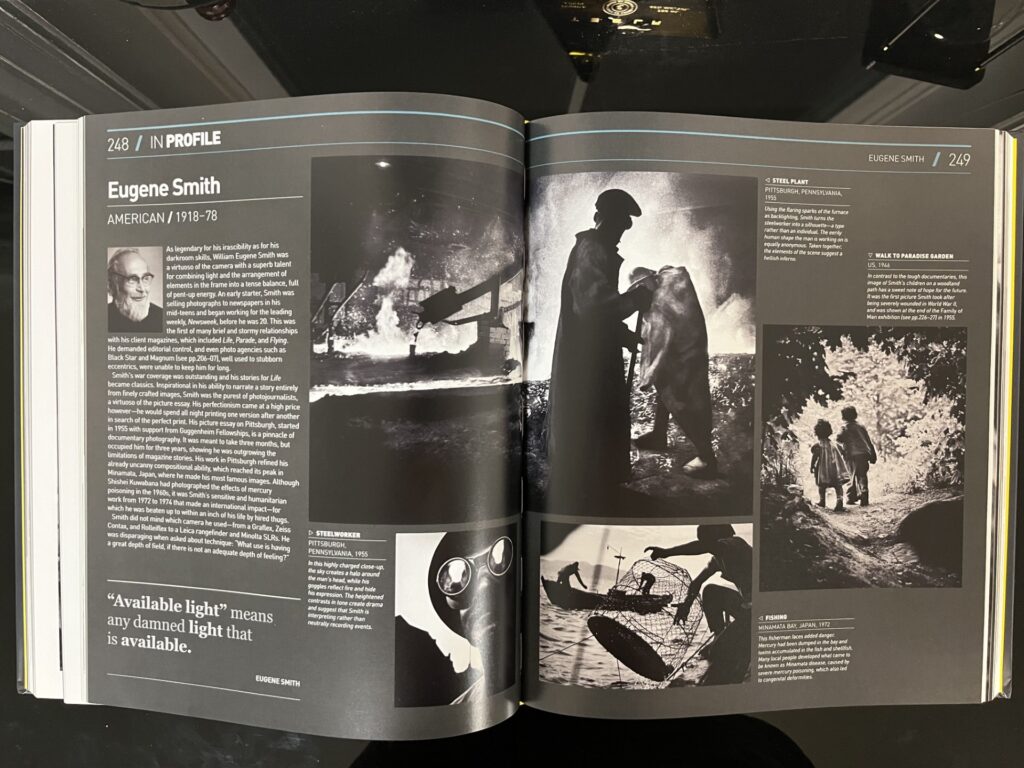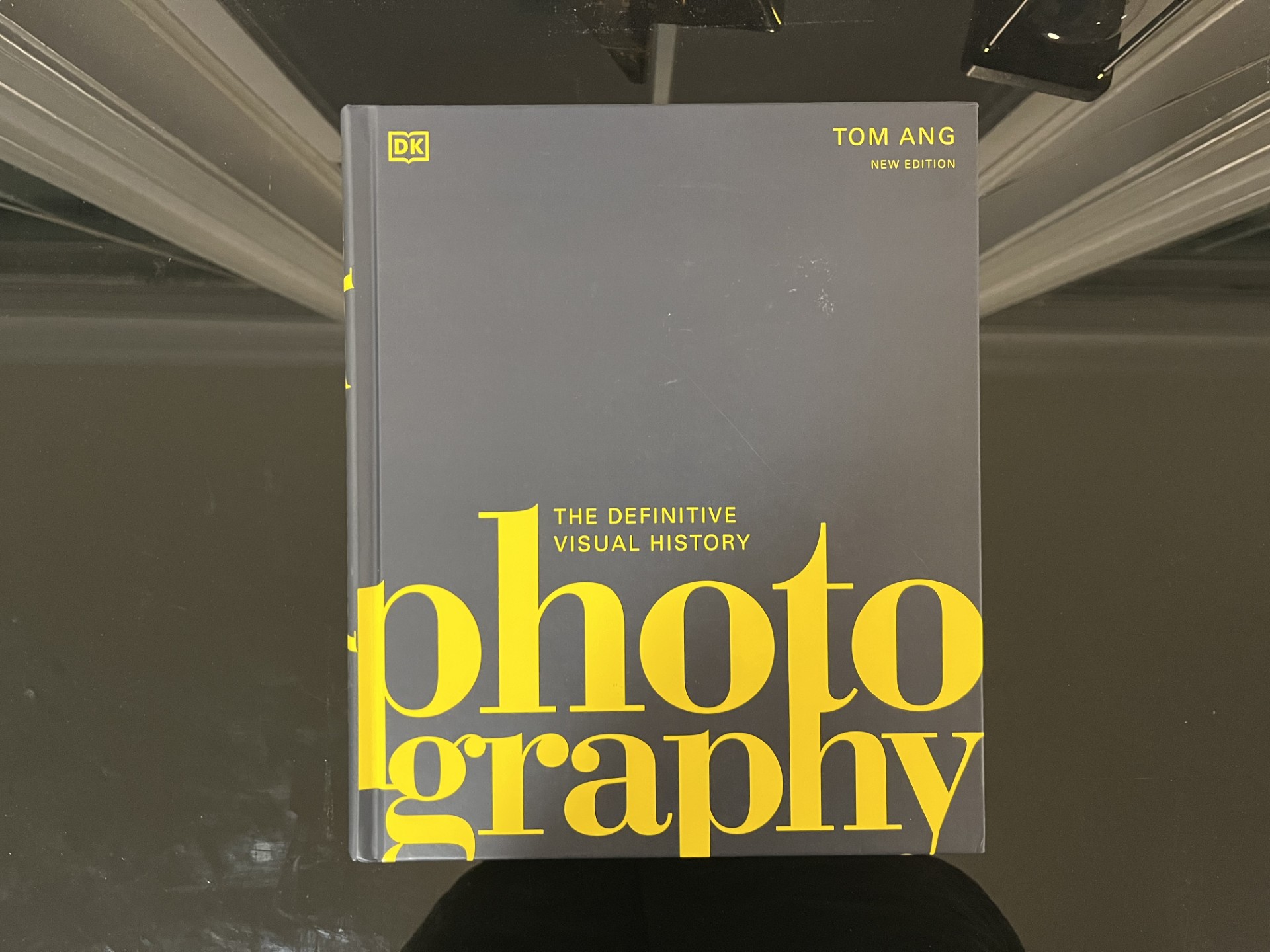“Photography: The Definitive Visual History” is a stunning coffee table book that captivates readers with its rich exploration of photography’s journey. This visual history features iconic images spanning over 200 years, showcasing the evolution from early black and white photographs to modern digital masterpieces. With more than 50 biographies of famous photographers, this book not only highlights significant works but also tells the stories behind them.
In an easy-to-digest format, this book serves as both a visual feast and an educational resource. It invites photography enthusiasts and casual readers alike to appreciate the craft and its impact on culture. Each page offers a glimpse into how photographers have shaped our understanding of the world through their lenses.

Whether one is an aspiring photographer or simply someone who loves art, this book has something for everyone. The thoughtful arrangement and rich illustrations provide an engaging experience that is hard to resist. For those looking to deepen their appreciation for photography, this book is an essential addition to any collection.
Exploring Photography’s Origins
Photography has a rich history that traces back to the early inventions that shaped how images are captured. Understanding this background offers insight into how photography has evolved over time.
The Invention of the Camera
The camera’s origins can be traced back to the 11th century when Alhazen, an Arab scholar, described the pinhole effect. This phenomenon allowed light to enter a dark space, forming an image on the opposite wall.
The first true camera, known as the camera obscura, emerged in the 16th century. This device projected an outside scene onto a flat surface. It wasn’t until the 19th century that the first permanent photograph was created using a photographic plate, marking a major milestone in the history of photography.
The Progression of Photographic Techniques
As photography advanced, various techniques were developed to improve image quality and accessibility. In 1839, Louis Daguerre introduced the daguerreotype. This process used light-sensitive metals to create detailed images, making photography more popular.
Other significant developments included the collodion wet plate process in the 1850s, which allowed for faster exposure times. By the late 1800s, George Eastman’s introduction of roll film revolutionized photography, making it easier for the average person to take pictures. This laid the groundwork for modern photography as we know it today.
Photography as an Art Form

Photography has developed into a recognized art form over the years. It combines technical skill with creative expression, capturing moments and emotions in a unique way. The exploration of photography as an art involves understanding its pioneers and the various artistic styles that have emerged.
Pioneers of Fine Art Photography
In the early days, pioneers like Alfred Stieglitz and Edward Weston shaped photography’s status as an art form. Stieglitz believed photography could express human emotion, often focusing on urban landscapes and intimate portraits. His gallery, 291, showcased many artists, linking photography with other art forms.
Weston, on the other hand, took a different approach. He focused on still life and nudes, paying attention to form and texture. His work showed that photography could capture both beauty and complexity. Other influential figures, such as Ansel Adams, revolutionized landscape photography, emphasizing detail and light in natural settings.
Evolution of Artistic Styles in Photography
As technology and culture evolved, so did artistic styles in photography. The transition from black-and-white film to color photography expanded creative possibilities. Movements like documentary photography aimed to tell stories, capturing real-life events with authenticity.
Later, photography embraced experimentation with techniques like double exposure and digital manipulation. Contemporary styles often blend traditional photography with modern technology, exploring themes of identity, environment, and social issues. Photographers now use their work to challenge perceptions and provoke thought, reinforcing photography’s status as a vital artistic medium.
Photography in the Digital Age
Digital photography has transformed how people capture and share images. The introduction of digital cameras and the rise of social media have significantly influenced both personal and professional photography.
The Rise of Digital Cameras
Digital cameras have become the primary tool for photographers. With advancements in technology, many cameras now offer high-resolution images and various features that enhance user experience.
Digital Single-Lens Reflex (DSLR) and mirrorless cameras provide options for both amateurs and professionals. The ability to take numerous photos without worrying about film costs is a significant advantage.
Smartphones also play a crucial role in this shift. With built-in cameras that can rival professional equipment, many people now use their phones for everyday photography.
Impact of Social Media on Photography
Social media platforms like Instagram and Pinterest have changed how photography is shared and consumed. They provide a space for photographers to showcase their work to a global audience.
Images posted on these platforms often reach thousands, sometimes millions, of viewers. This visibility has led to new trends and inspirations in photography styles and techniques.
Photographers can now receive instant feedback, allowing them to improve and adapt their skills quickly. The interaction with followers creates a sense of community among photography enthusiasts.
The Cultural Significance of Photography
Photography holds a unique place in culture, playing essential roles in journalism and media while also preserving history. These functions highlight how photography influences society and captures moments that matter.
Photography in Journalism and Media
Photographs can tell powerful stories. They are crucial in journalism and media, serving as visual evidence of events. From iconic war images to snapshots of protests, photographs can evoke strong emotions and inspire action.
They bridge gaps between people and stories, often communicating complex ideas quickly. In newspapers, magazines, and online platforms, compelling images draw readers in. A striking photo can be as impactful as the written word, making photography a vital tool for journalists.
Moreover, social media platforms amplify this role. Everyday people share images that contribute to news coverage, creating a more participatory form of journalism. This has changed how news is reported and consumed.
Preserving History Through Photographs
Photographs serve as time capsules, preserving moments for future generations. They document significant events, cultural shifts, and everyday life, creating a visual archive of history.
From family portraits to historical milestones, photographs offer insight into the past. They help people connect with their heritage, providing context and understanding of where they come from. This preservation deepens cultural appreciation and promotes learning.
Artfully taken images, like those in Photography: The Definitive Visual History, also highlight important social changes. Some photos have become symbols of movements, influencing public opinion and policy.
In this way, photography not only captures moments but also shapes collective memory and cultural identity.
